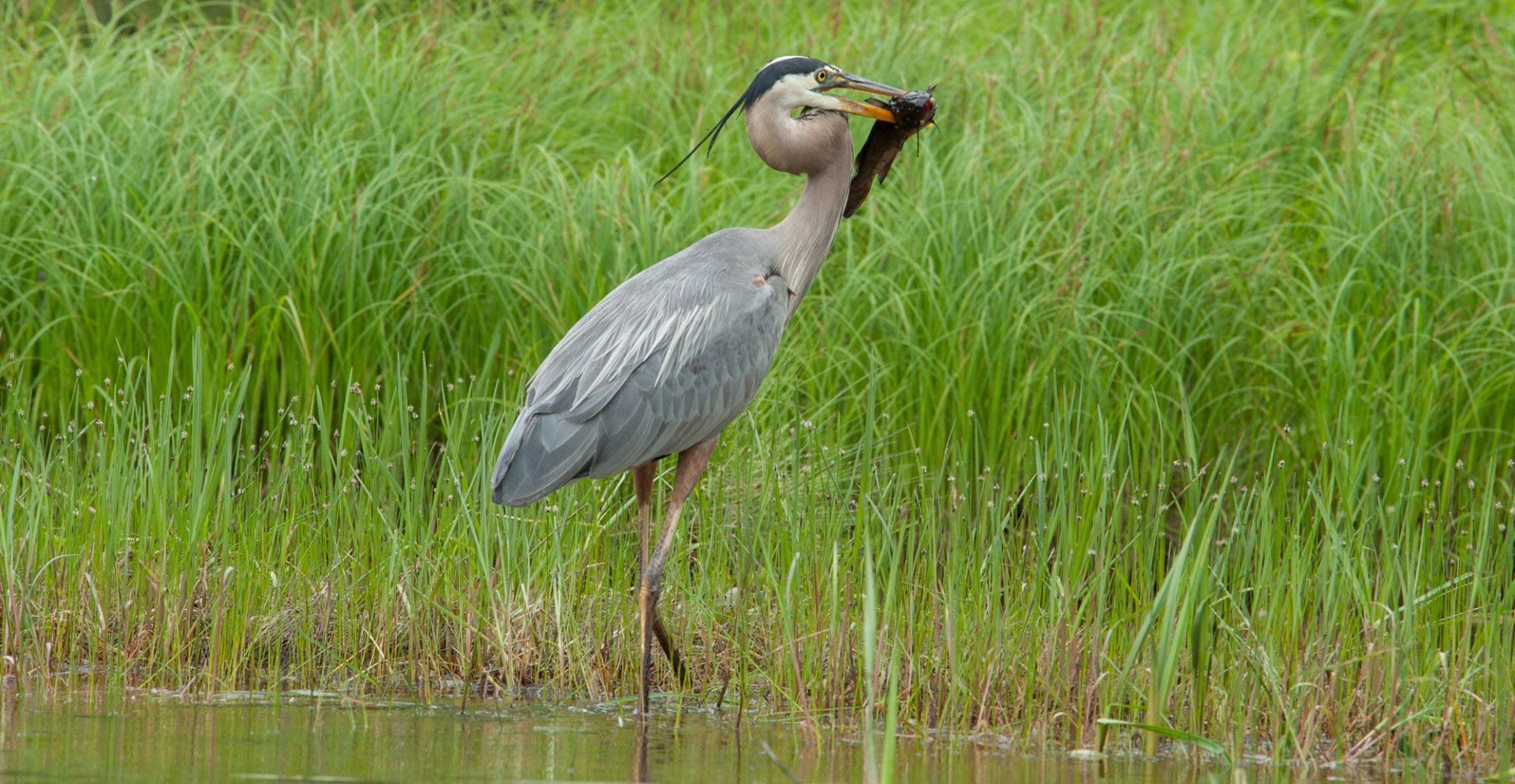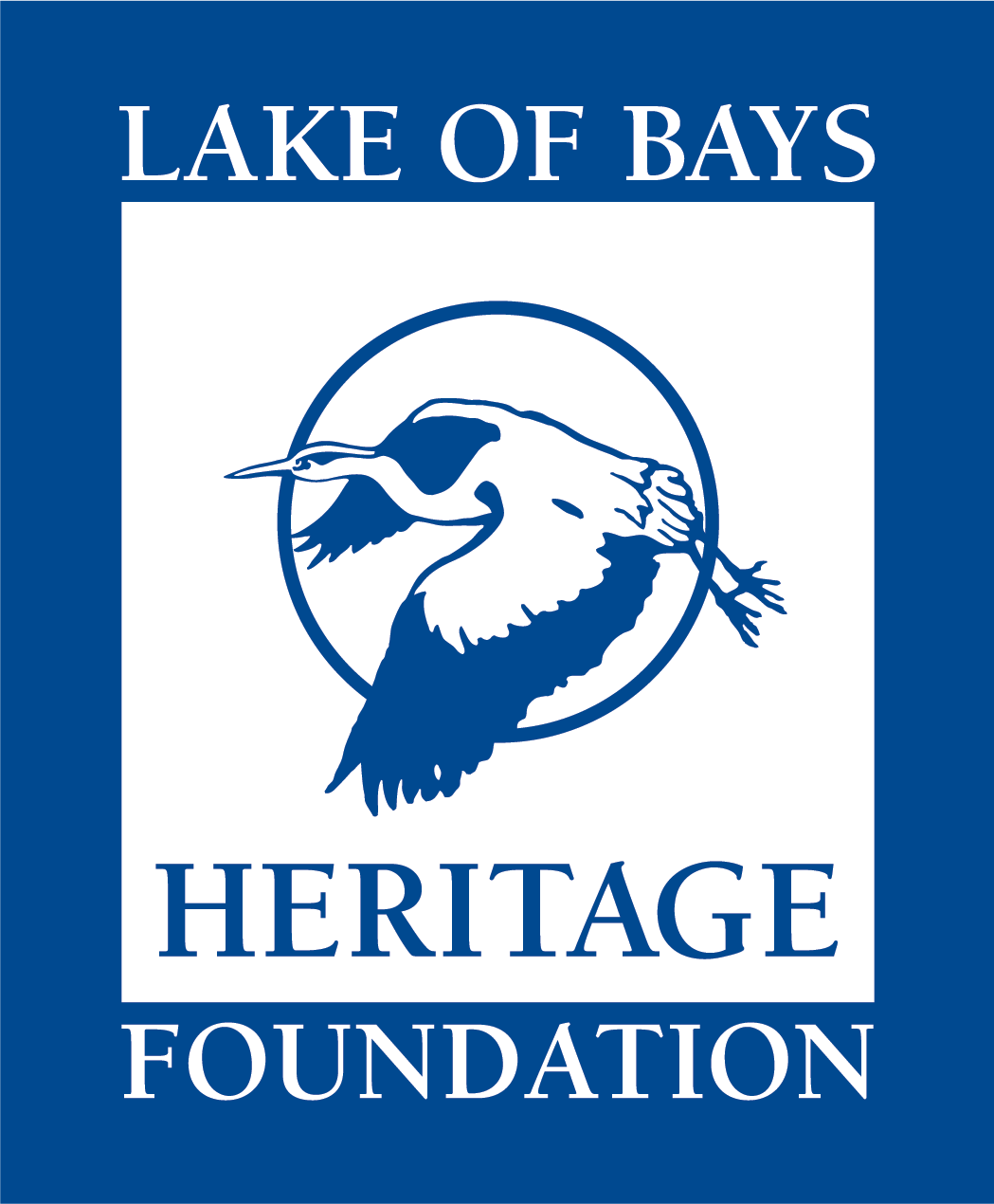Wetlands in our Watershed

We are fortunate to have large areas of wetlands around Muskoka and Lake of Bays. Whether they are a marsh, bog, swamp or fen, each type of wetland plays a role in our water quality and wildlife food chain. The Lake of Bays Heritage Foundation (LBHF) wants people to understand how wetlands work, appreciate their importance and look for ways to ensure we keep them.
Wetlands are called nature's kidneys because they act as a natural filtering system. Some types of wetlands can trap and neutralize sewage waste. This is done mainly by the wetland vegetation: plants absorb nutrients and help cycle them through the food chain. Plants also slow down flowing water and thereby cause silt to settle out. Wetland plants provide food to other wildlife species in addition to their normal role of providing oxygen through photosynthesis.
By their ability to retain water, wetlands also provide a natural flood barrier that slows down the runoff of spring melt water and also storm water. This ability to hold back runoff makes them very useful in many parts of Canada because the normal low summer flow in rivers often causes serious problems for people and places depending on rivers for their water supply. The more wetlands there are in the drainage area, the higher the likelihood that serious water shortages can be prevented.
Finally, wetlands also help to reverse global warming. Global warming is largely due to the release of carbon dioxide into the atmosphere. Wetlands are carbon sinks: the carbon from decaying plant and animal tissue accumulates in the wetlands rather than being released into the atmosphere as carbon dioxide.
Wetlands are also well known for attracting birds. Wetlands are extremely important as a habitat for many species. All of Canada’s wetland areas provide breeding, nesting and wintering habitat for thousands of migratory birds and shorebirds. Birds that are commonly associated with wetlands include ducks, geese, swans, herons, bitterns and birds of prey such as ospreys.
The Muskoka Watershed Council has developed a brochure to educate landowners on the value of small wetlands on their property. It deals with stewardship, species at risk, importance of wetlands and how to enjoy their wetland. It is available at www.muskokaheritage.org
The Watershed Council has identified 68 significant areas and sites throughout Muskoka — around 30 of those sites are classified and protected as provincially significant wetland.
You can access these websites for more information about caring for wetlands on your property: www.hww.ca or www.ducks.ca
